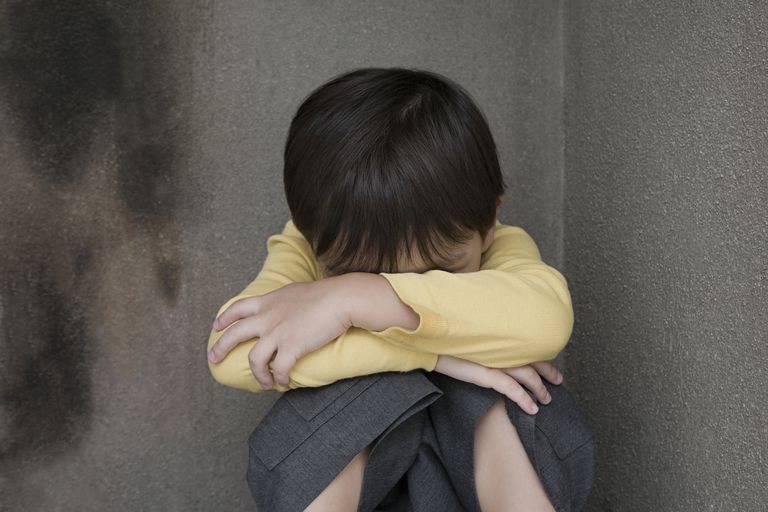Very negative childhood experiences are frequently used to characterise childhood trauma (ACEs). Psychologically traumatic situations for children can include neglect, abandonment, sexual, emotional, and physical abuse, as well as witnessing the abuse of a parent or sibling or having a parent who is mentally ill. These occurrences have significant psychological, physiological, and societal effects and can have negative, long-lasting effects on health and wellbeing, such as antisocial behavior, attention deficit hyperactivity disorder (ADHD), and sleep issues.
Similar to this, children whose mothers experienced traumatic or stressful events while pregnant are more likely to have neurodevelopmental issues as well as mental health issues.
According to a 1998 study by Kaiser Permanente and the Centres for Disease Control and Prevention on adverse childhood experiences, traumatic experiences as a child are the main contributor to a number of social, emotional, and cognitive deficits that increase the risk of violence or re-victimization, chronic health conditions, low life potential, and early mortality.
An individual’s allostatic load increases as a result of childhood trauma, which has an effect on the immune system, neurological system, and endocrine system. Chronic stress exposure increases the risk of unfavourable medical outcomes by a factor of three or four. Childhood trauma is frequently linked to poor health outcomes, such as depression, high blood pressure, autoimmune disorders, lung cancer, and early mortality. Among other effects, emotional control and social skills development are hampered by childhood trauma. According to research, kids who grow up in dangerous or traumatic homes often exhibit excessive internalising (such as social isolation or anxiety) or externalising (such as aggression) as well as suicidal conduct. Recent research indicates that emotional abuse is linked to personality disorders and schizophrenia, while mood and anxiety disorders are linked to physical and sexual abuse in adulthood.
In addition, research has demonstrated that mental health effects of childhood trauma can be better understood using a dimensional framework (internalizing aPeople may be more likely to develop mental illnesses like post-traumatic stress disorder (PTSD), attachment issues, depression, and drug abuse after experiencing trauma as children. Children’s critical and sensitive developmental periods can result in altered brain function that is able to adapt to a hostile environment but difficult in a more welcoming one.
Through care and therapy, the negative consequences of childhood trauma just on body can be lessened. Childhood trauma can be treated in a variety of ways, including pharmacological and psychological means. Psychosocial interventions can be directed at specific people, like psychotherapy, or at larger populations, like school-wide interventions. Trauma-focused cognitive behavioural therapy may be the most successful for treating childhood trauma, despite research (systematic analyses of the available data) showing that many other forms of therapies are helpful.
The preferred psychological therapy for PTSD is cognitive behavioural therapy (CBT), which is also suggested by best-practice treatment recommendations. CBT aims to assist patients in altering their attitudes, beliefs, and thoughts in order to better manage their emotions. It is also designed to help patients develop their problem-solving abilities and better deal with trauma. Several studies show that CBT is successful in treating PTSD in terms of the degree of symptom decrease from pre-treatment levels and diagnostic improvement. Stigma, expense, location, and a lack of treatment availability are some of the treatment-related barriers.
A kind of cognitive behavioural therapy called trauma focused cognitive behavioural therapy (TF-CBT) is intended to treat PTSD in children and adolescents. The CBT tenets are combined with trauma-sensitive methods in this therapy plan. Before enabling the kid to process the trauma on their own in a secure environment, it helps to offer skills to cope with the symptoms of the trauma for both the child and the parent, if available. Trauma-focused cognitive behavioural therapy is one of the most effective therapies for reducing the detrimental psychological consequences of childhood trauma, including PTSD, according to studies (systematic reviews).
Therapists utilize the method of eye movement desensitisation and reprocessing treatment (EMDR) to aid in the processing of traumatic memories. During the intervention, the patient is asked to think back on painful experiences and employ bilateral stimulation, such as tapping the fingers or moving the eyes, to assist control their emotions. When the patient grows desensitised to the experience and is able to recollect it without reacting negatively, the therapy is finished. A randomised controlled experiment found that EMDR was both effective and efficient in treating children who had experienced a single traumatic incident. Moreover, research has demonstrated the efficacy of EMDR as a PTSD therapy.
With a mix of cognitive behavioural and mindfulness strategies, dialectical behaviour therapy (DBT) has been proven to be effective in preventing self-harm and improving interpersonal functioning by lowering experience avoidance and expressed anger.
In order to develop resources and abilities for resilience, the real-life heroes (RLH) therapy focuses on three main areas: affect control, emotionally supportive connections, and life narrative integration. It is a sequential, attachment-centred therapeutic intervention for kids with Complex PTSD. The Real Life Heroes programme was shown to be successful in treating behavioural issues and PTSD symptoms in a study of 126 kids.
A behavioural coding system called the narrative-emotion process coding system (NEPCS) identifies eight client markers, including the following: the abstract story, the empty story, the unstudied emotion, the inchoate story, the same old story, the competing plotlines story, the unexpected outcome story, and the discovery story. The degree to which certain narrative and emotion process indicators are depicted in one-minute time segments taken from filmed treatment sessions differs for each marker. While improved narrative and emotional expression has been connected to complicated trauma healing in the past.
.Visit TalktoAngel to find the best mental health professionals available online. You can get the help you need by using this search engine for “Psychiatrist near me” or “Counselling online.”

